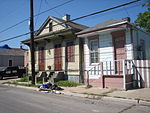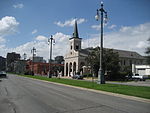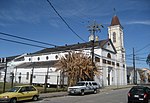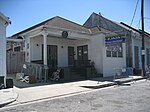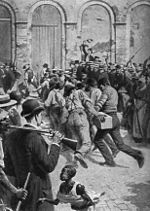Nola Art House
The Nola Art House (formerly known as GNOAM) was a Creole mansion (built c.1870) located on Esplanade Avenue in New Orleans's Faubourg Tremé. John Orgon founded the space in 2005 in order to offer affordable housing to New Orleans-based artists. The vision was to maintain a facility which would unite professional artists with one another, who in turn could exchange ideas and feedback, or collaborate with one another on projects. The house was divided into private rooms that doubled as studio work spaces. The house's parlors and expansive hallways afforded a professional gallery space for residents to showcase their work. The property was sold in July 2014 to new owners with different objectives, and the artists who were involved at the Art House have moved on to other projects.
Excerpt from the Wikipedia article Nola Art House (License: CC BY-SA 3.0, Authors).Nola Art House
Esplanade Avenue, New Orleans French Quarter
Geographical coordinates (GPS) Address Nearby Places Show on map
Geographical coordinates (GPS)
| Latitude | Longitude |
|---|---|
| N 29.969527777778 ° | E -90.069388888889 ° |
Address
Esplanade Avenue 1614
70116 New Orleans, French Quarter
Louisiana, United States
Open on Google Maps



